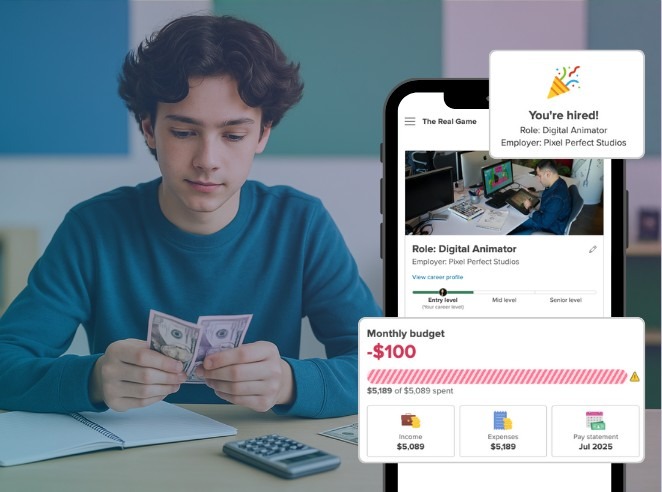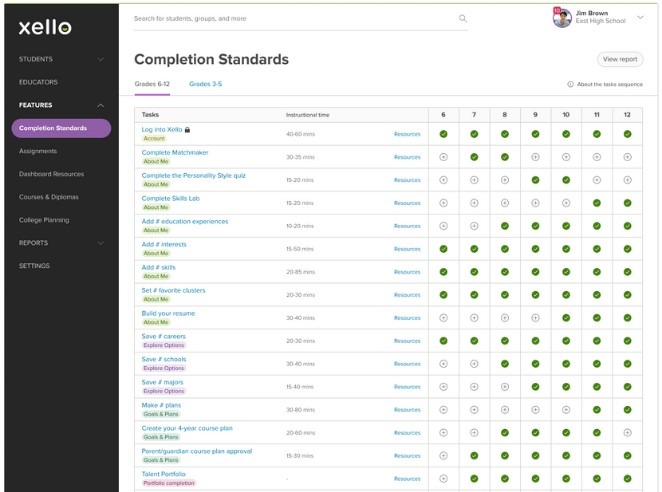Evaluating School District Funding Options: Empowering Educators to Find the Funding to Enable Student Success

Are there any funding options for school leaders to look into to help ease the strain caused by budget cuts? In this blog, we go over the main sources of funding that are available to school district leaders, highlighting where they can find funds to ease the impact created by budget constraints.
COVID-19 has impacted everything. The virus has left the world in an economic upheaval, leading to changes in how schools operate and creating a direct impact on school district budgets, causing school leaders to scramble.
However, there are still funding options school leaders can look into to help ease the strain caused by budget cuts due to COVID-19.

In this blog, we go over the main sources of funding that are available to school district leaders, highlighting where they can find funds to ease the impact created by budget constraints.
So let’s dive in, shall we?
Understanding School District Funding Options
In the United States, public schools have three main sources of funding: local, state, and federal sources.
According to an EdWeek article titled ‘School Finance,’ schools get 48% of their funding from the state, 44% from local, and the remainder from the federal government. The actual numbers vary in each state or community.
We also spoke to Alisha Hyslop, Senior Director of Public Policy for the Association for Career and Technical Education (ACTE). Alisha supervises policy research and advocacy at the ACTE and was able to give us some valuable information on which sources school leaders can tap into when evaluating funding options.
“When evaluating funding options, every state gets a mix of local funding (from taxes), state funding, federal funding and sometimes private funding that they can tap into. Every district has different formulas and requirements for accessing funds though, so it is important to have a conversation with school or district leaders, to ensure you understand your area’s unique requirements when it comes to funding,” says Hyslop.

She also adds that when it comes to evaluating funding options, school leaders must consider the state and local context as well.
“Understanding the state and local context is important. Funding options will look different everywhere because every place has a different budget structure. The more knowledge that local practitioners can gather about their unique budget situations, the more they’ll know about where to find resources and also what resources are available to them,” explains Hyslop.
The government, at the state level, draws school-related funds from income tax and sales tax, both of which have been greatly impacted by the pandemic and resulting shutdowns.
While the exact degree or severity on school budgets is not yet clear, the impact is already being felt.
According to an NPR article on the financial impact of budget cuts to America’s schools, in May, Ohio Gov. Mike DeWine presented K-12 budget cuts of $300 million for the current fiscal year (through June 30 of 2020).
Some may point to the CARES Act as a way to fill budget shortages.
However, although the CARES Act will certainly help as it allocated $13.5 billion in emergency funding for K-12 schools, it won’t be enough.
The shortfall is significant according to an EdWeek article by Daarel Burnette II, where he notes that K-12 finance experts believe that $100 to $200 billion “is the amount needed to avoid mass layoffs this summer [2020].”
With seemingly every industry and government service in need, it’s hard to imagine the government getting to this mark.
Who and What will be Impacted by the Budget Shortfall?
Those school districts that rely primarily upon the state will be impacted more than those that rely on local funding. Such districts, notes Burnette, tend to be the wealthiest and highest spending districts.
“No matter which way you slice it, low-income and school districts with lower-performing students are most heavily reliant on state aid and stand to lose the most when sales and income tax revenue go into a tailspin,” he says.
According to Burnette, the initiatives that are most at risk are those that were launched after states created their funding formula.
These include, “pre-K programs, after-school programs, vocational programs, programs for English-language learners, and, in many states, school choice programs such as vouchers and charter schools.”
He also speculates that a hold will be placed on school construction projects and states’ education departments will be slashed.
When to Look for Funds and What are the Options Available to School Districts?
With the normal funding spigots sputtering, school leaders are likely to try and find money through non-traditional means, such as grants.
However, there are still some important funding options you should look into before turning to other sources.
Alisha Hyslop highlights some of the important options for school district leaders and also talks about when to apply for funding.
“The vast majority of funds available to school leaders involve local and state funding options. However, federal dollars can often be more flexible than local and state funds, which are often directed toward teachers’ salaries and basic operational expenses. The largest pots of federal dollars are usually available through the Individuals with Disabilities Act (IDEA) or the Every Student Succeeds Act (ESSA). Within ESSA, Title I is the largest of that but Title II and IV are significant as well,” explains Hyslop.

ESSA Title IV funding is known as the Student Support and Academic Enrichment (SSAE) program.
“Then there’s Perkins V, which might fall behind those other funding options mentioned. And then there are dozens of smaller programs as well that school leaders can look into,” says Hyslop.
Let’s take a deeper look into Perkins V and ESSA Title IV funding options.
Perkins V
Perkins V or the Strengthening Career and Technical Education for the 21st Century Act was authorized in the summer of 2018.
The purpose of the act is to, “identify, support, and rigorously evaluate evidence-based and innovative strategies and activities to improve and modernize career and technical education and align workforce skills with labor market needs in CTE programs funded under the Act.”
The program, which reauthorized and strengthened the 2006 Perkins IV Act, provides approximately $1.3 billion annually for career and technical education (CTE) programs and is the main federal source for such programs.
Hyslop explains that, under the new law, each local K-12 school district has to submit a comprehensive needs assessment to their state. Essentially, school districts conduct a research project to identify their unique needs and then submit a local application to their state in order to be eligible for funding.
“In most states, these steps have already been done. Some, however, may still be working on these steps due to delays from COVID-19,” says Hyslop.
Why conduct a needs assessment? The reasoning, according to Chris Zook, who writes for the Applied Education Systems, is simple.
“Every locality experiences different challenges and diverse people, meaning they also have different economies,” he explains.
Perkins V also significantly changes the process for setting performance targets, shifts the accountability indicators, and increases the focus on serving special populations.

According to Stukent, the applicant process for a Perkins V grant is different for each state and can even vary by district, which makes the process challenging.
Therefore, they note, “It can be beneficial to contact your state CTE director because they can help you apply for a Perkins grant and can direct you to other qualified professionals.”
Funds under Perkins V can only be used for items that have been defined in the needs assessment.
“Pre-COVID-19, a lot of these items included equipment or professional development. The shift towards e-learning has changed things a bit,” says Hyslop.
To learn more about what the funds can and can’t be used for, visit this site.
ESSA, Title IV and the SSAE Program
According to the Afterschool Alliance, ESSA is the replacement for No Child Left Behind and “combined several previously independent programs under NCLB into a single flexible block grant.”
ESSA serves as the guiding federal education law.
Free ESSA eBook: Improving Student Success through College and Career Readiness
Signed into law in December of 2015, ESSA reauthorized the Elementary and Secondary Education Act of 1965 (ESEA). The Student Support and Academic Enrichment (SSAE) program is newly authorized under subpart 1 of Title IV.
As explained by the National Center on Safe Supportive Learning Environments, “The SSAE program is intended to improve students’ academic achievement by increasing the capacity of State educational agencies (SEAs), local educational agencies (LEAs), and local communities to provide all students with access to a well-rounded education; improve school conditions for student learning; and improve the use of technology to improve the academic achievement and digital literacy of all students.”
With the March 2018 budget deal, the program saw a significant increase.
According to the Afterschool Alliance, as a formula block grant program, SSAE funds are “distributed to state education agencies based on the ESSA Title I formula, and the districts, or local education agencies (LEAs), by the same formula.”
Although all schools/districts are eligible for the grant, it’s intended to serve schools/districts with a high percentage of students from low-income backgrounds.
“While Perkins V is just for CTE programs, Title IV of ESSA is a much broader program that can be used for a wide range of activities. This can include career development, social-emotional learning, counselling, academics, arts, technology etc.,” says Hyslop.
To learn more about the program, visit this site.
Other Sources
As politicians continue to debate a follow up to the CARES act, there is no doubt about the fact that there’s a need for more money for K-12 education.
But no one can accurately predict how much money K-12 education will receive or even when a bill will make it past the political gridlock.
Therefore, schools/districts would be wise to strive to find other sources of income if they can not make their budgets work.
On the United States Department of Education website, there’s a page that includes approximately 30 grants.
You can also look into funding options for your technology needs, especially in light of remote learning initiatives.
Follett has created an extensive list of grants. While many on the list are microgrants, some have rewards of up to $100,000. Another list of grants of varying levels of funding can be found in The Journal.
School districts will find it challenging to meet budgets in the 2020/21 school year and, in all likelihood, for the next few years if COVID-19 causes more economic upheaval.
Grants can help schools/districts lessen budget gaps and keep programs, personnel, and projects moving forward.



